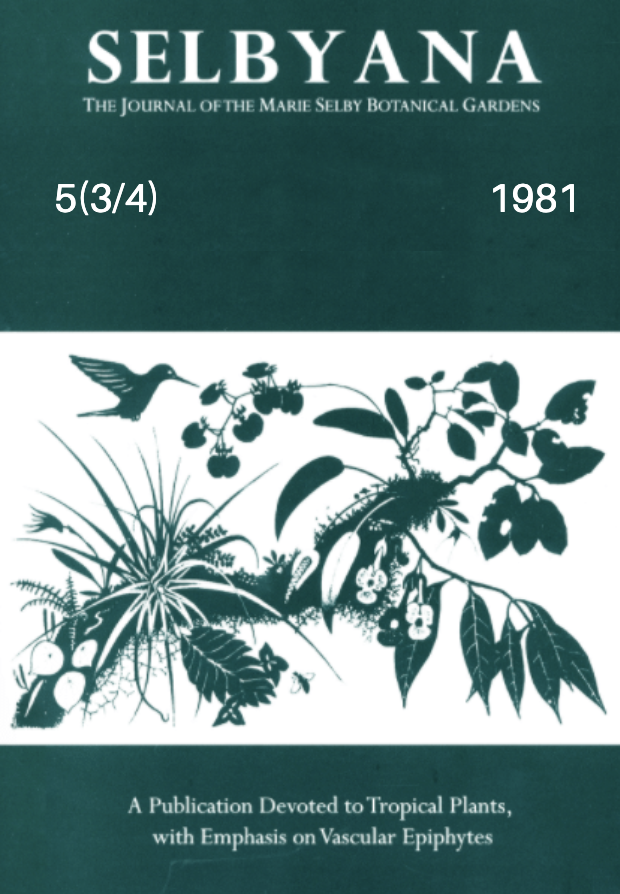Abstract
Obligate epiphytes are vagrants via-reproductive units and move among host islands scattered across hostile seas of treeless space and unaccommodating canopy vegetation. Within acceptable crowns, these plants face a finer-grained patchiness enforced by gaps between adjacent branches and by shade and rain shadows. Surfaces colonized by canopy dwellers are unstable. Quite often the lives of branches or even whole trees are too short to allow a resident epiphyte time to mature or, should adulthood be achieved, to fruit more than a few seasons. Exacerbating the disturbance factor are aridity and site infertility. Both increase a population's vulnerability to environmental perturbations by prolonging juvenility (the interval an organism needs to amass resources for a first reproductive effort) and the "recharge" time subsequently required between successive fruiting seasons. Canopies of most tropical forests experience dry seasons of varying lengths and parallel
degrees of oligotrophy (Benzing & Renfrow, 1980). In essence, organisms obligated to anchor on bark surfaces face a particularly formidable combination of density-independent constraints, perhaps a more imposing set than those impacting on most soil-rooting taxa (Benzing, 1978a).
Open Access and Copyright Notice
Selbyana is committed to real and immediate open access for academic work. All of Selbyana's articles and reviews are free to access immediately upon publication. There are no author charges (APCs) prior to publication, and no charges for readers to download articles and reviews for their own scholarly use. To facilitate this, Selbyana depends on the financial backing of the Marie Selby Botanical Gardens, the hard work and dedication of its editorial team and advisory board, and the continuing support of its network of peer reviewers and partner institutions.
Authors are free to choose which open license they would like to use for their work. Our default license is the Creative Commons Attribution-NonCommercial 4.0 (CC BY-NC 4.0). While Selbyana’s articles can be copied by anyone for noncommercial purposes if proper credit is given, all materials are published under an open-access license with authors retaining full and permanent ownership of their work. The author grants Selbyana a perpetual, non-exclusive right to publish the work and to include it in other aggregations and indexes to achieve broader impact and visibility.
Authors are responsible for and required to ascertain that they are in possession of image rights for any and all photographs, illustrations, and figures included in their work or to obtain publication or reproduction rights from the rights holders. Contents of the journal will be registered with the Directory of Open Access Journals and similar repositories. Authors are encouraged to store their work elsewhere, for instance in institutional repositories or personal websites, including commercial sites such as academia.edu, to increase circulation (see The Effects of Open Access).
